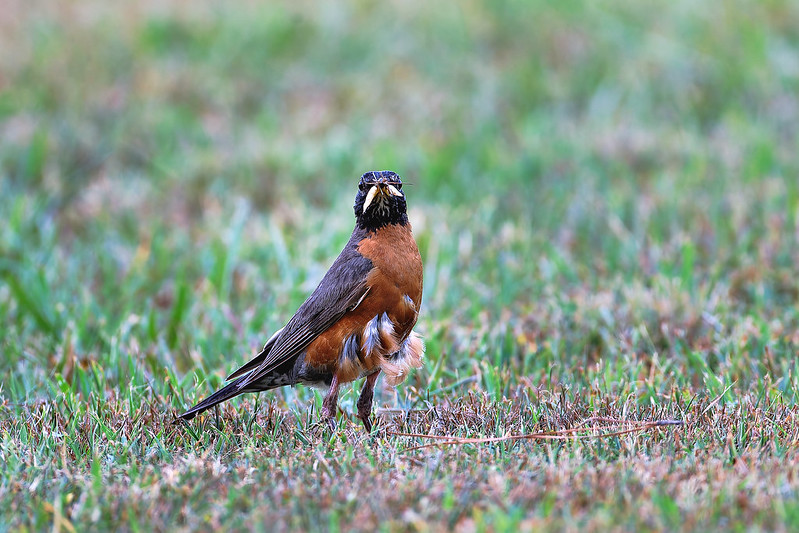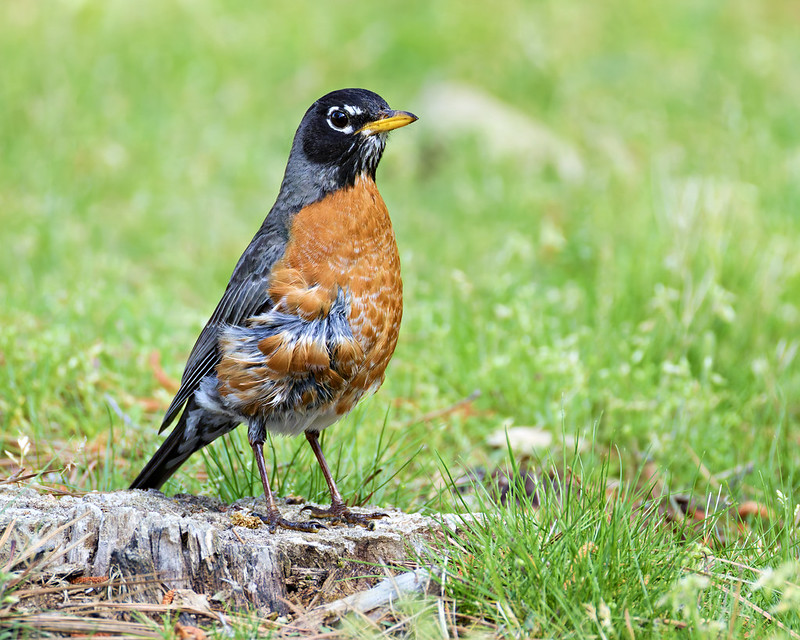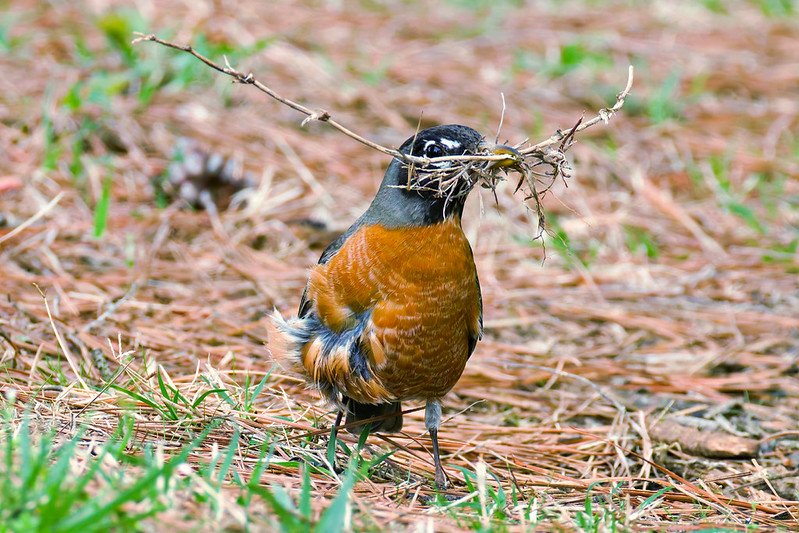I found two American Robin photos in my archive that show an odd but familiar look.
The first photo is from July 14, 2009. The second is from April 16, 2025, taken nearly in the same spot in my yard. In both, the robin’s belly feathers stick out in loose, scruffy clumps.


What’s Going On With Those Feathers?
Brood patch:
Female robins shed or pluck belly feathers before laying eggs. This exposes a bare area of skin called a brood patch, which helps transfer warmth to the eggs. The loose feathers often bunch up along the sides, giving a ragged appearance.
Timing:
The brood patch forms in early spring and stays through incubation and brooding. It disappears once new feathers grow back during the summer molt.
Health check:
Messy flanks during the nesting season are normal. The robin in my photo looked alert, active and healthy, no signs of illness or injury.
Could It Be the Same Bird?
The average lifespan of an American Robin in the wild is about 5 to 6 years for those that survive their critical first year. Most robins die within their first year, but if they make it past that stage, their chances of living longer increase significantly. The longest recorded lifespan for a banded wild American Robin is nearly 14 years, while in captivity, robins have been known to live up to 17 years or more. That makes it unlikely the 2009 bird is still around, but a return between 2024 and 2025 is more believable.
My Arkansas yard has everything a nesting robin could want – earthworms, low trees, and quiet corners. It’s not unusual for a successful female to return to the same territory year after year.

Photographing Nesting Birds
- Keep your distance. I used a tripod on the deck and a 800 mm lens.
- Watch for stress. If the bird stops foraging or looks uneasy, it’s time to back off.
- Keep it brief. A few minutes is enough for a documentary shot. The bird’s comfort comes first.
What I Learned
- Old photos can tell new stories. Digging through the archive revealed a familiar pattern and maybe a familiar bird.
- Behavior is a clue. That scruffy brood-patch fringe helps identify sex and breeding stage better than plumage alone.
- Give wildlife space. A good photo means nothing if it comes at the cost of a stressed animal.
Have you noticed the same birds coming back to your yard each year? Let me know in the comments. Each return visit adds a new line to our backyard wildlife stories.
I recently wrote about another robin in a different post – A Tailless American Robin at the Birdbath. That bird also showed unusual feather features and stuck around my yard for a while.

Interesting !